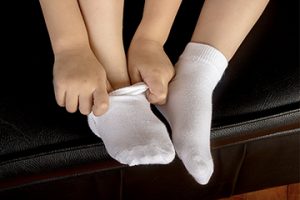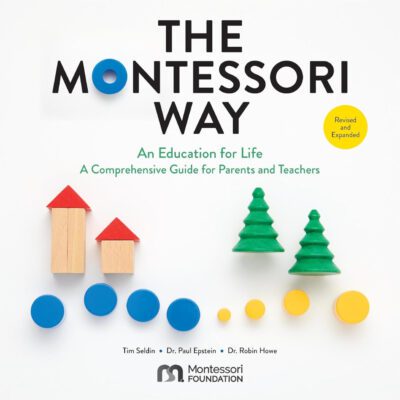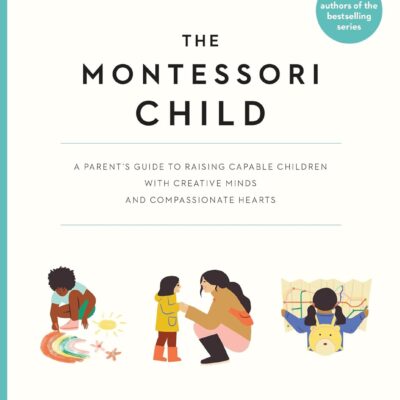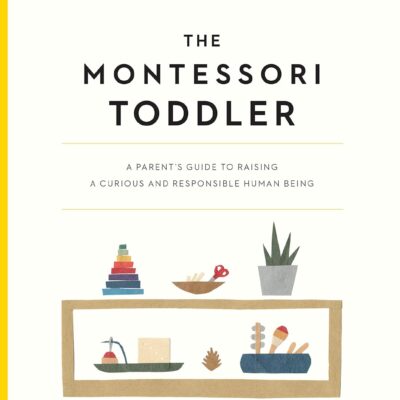Dear Cathie—
We are new to the Montessori philosophy and want to make the most of it in our family and our children’s lives. We have come to this a bit late, as we just moved to an area with a Montessori school. We have enrolled both of our children and are trying to learn as quickly as possible. What are the kinds of things we should be doing at home to support the kind of learning the children are doing at school? — new Montessori parents
You are asking all the right questions and doing all the right things! Montessori is indeed a philosophy and you can’t adopt it too late in the life of your family or your child. In a Montessori school, the guides believe that your child will reveal himself through the work that he chooses and shows us (the adults in his life) that which he needs to learn at that time. It is our job to aid him in this journey, showing him skills and activities that interest him, challenge him, and grow his academic, social, and motor skills as he moves along this path.
We strive to allow him as much freedom as he can handle in doing things for himself and being independent. We create an environment with maximum accessibility based on the ages and skills of the children and then teach them to use the materials in that environment safely. An Infant/Toddler environment would let the child be able to reach for their own diapers and their own lunch box so they can show us when they are hungry. A 3-6-year-old environment might contain scissors, a stapler, tape dispenser, sewing needles etc. An Elementary environment is much richer with all the tools and resources a child would need to plan a complicated individual or group project or a “going-out” field trip of their own choosing.
The primary ways that your family can help are to allow your child to be as independent as possible in all areas of his life. Let your child do as much for himself as his age and skill set allow in the areas of dressing, eating, food preparation, and contributing to his family. Let him choose his clothing and dress as much as he is able. If he cannot do all of a dressing task, let him do the part that he can. If he is not strong enough to pull on his whole sock, you can pull the sock over his heel and he can pull it up to his ankle. If he cannot manage his shirt, let him place his hands in the sleeve holes and then help him get his head into the head hole. Together pull the shirt over his torso. Removing clothes is an easier skill and will be mastered more quickly. With that comes the responsibility of placing the dirty clothes into the hamper. Sure, you can do it quicker, but letting him do it aids him in the path to independence! As he gets older invite him to help you sort the laundry, match the clean socks, fold the dish towels, and even carry his own lunch box to the car and into school. Try to constantly think
of things that you are doing that your child might be able to do
for himself.
Strive for independence in eating and food preparation. At mealtime, encourage your child to help prepare the meal. Teach your child to set the table. Perhaps, at first, he will only place the napkins under the fork. Eventually, he will know where all the parts of the table setting go and will be able to do it independently. This is a great way to get some quality family time while teaching valuable table-setting and food-preparation skills. A child as young as two can tear lettuce, and at three or four can cut vegetables using a child-friendly knife (https://www.forsmallhands.com/small-nylon-knife). Preschoolers can also help to cut vegetables or fruit even when they are not brave enough to eat them. Once the meal is on the table, encourage your child to serve himself from the family serving bowls. This is good practice in motor control as well as choosing the amount of food you are planning to eat. If your child is Elementary aged and your family is ordering ‘take out,’ allow your child to help in the planning and even in making the phone call to order the food.
Allow your child to get his own snacks independently (within reason). Create a place in your home that has snacks available for your child. Let him choose his own snack food from among those choices. Since you (the parent) stock the snack spot, you still have ultimate control over how much and what your child is eating. Your child is gaining valuable practice in deciding what to eat and how often to eat from these limited choices. If your refrigerator allows it, place a small pitcher and glass on a low shelf so your child can pour his own water or juice when he is thirsty.
As he moves towards Kindergarten, he is probably ready to take over parts of packing his own school lunch. Try to arrange your refrigerator so the things that your child will need for his lunch are available for him to access independently. He can select his own yogurt, or make his own sandwich, put his own fruit into the reusable container and close it (great motor practice), and fill his own water bottle. Let it be a joint effort until his skills are solid, and then let that be your child’s work because he has mastered another piece of independence. Let your child be a part of choosing what food to buy each week, so he gets to experience being a smart consumer. Once he is old enough, he will be able to contribute to the family grocery list and eventually shop for himself with confidence and skill.
Encourage your child to contribute to the family. A very young child can do simple tasks such as taking their plate to the sink, hanging up their towel or putting their toys away. Children a bit older can bring in the mail, feed the dog, empty the trashcans in the house, or take out the garbage. Families can work together to plan vacations, solve problems within their families, or create a new project, such as a vegetable garden or a fire pit. All of these things help the family to function as a unit and help children realize that they are a member of a group.
Optimal development is the goal of every Montessori classroom and every family. Guides encourage each child to grow in their social, emotional, academic, self-help, and motor skills each on his own timetable. All the adults in a child’s life help him along his path to independence, and by working together, parents and Montessori schools aid the optimal development of a child so he can become his most authentic, happy, and healthy self.
Tomorrow’s Child/ September 2018/Pg 34









